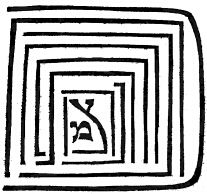 Kabbalah is not really a system. It evolved, over centuries, from many strands of oral tradition, and, as a result, often has multiple opinions on core issues. Questions of God’s essence and manifestation, of the origin of evil, of what happens to the soul after death — in truly systematic theologies, these sorts of issues are debated, and, usually, one view wins out over others. Within the Kabbalistic literature, multiple answers to these questions, and many more, can be found. Though, today, people say things like “the Kabbalah says…,” in reality “the Kabbalah” does not say anything. Different books by different authors may hold various positions, but the Kabbalah as such is not a unified system with a single view of reality.
Kabbalah is not really a system. It evolved, over centuries, from many strands of oral tradition, and, as a result, often has multiple opinions on core issues. Questions of God’s essence and manifestation, of the origin of evil, of what happens to the soul after death — in truly systematic theologies, these sorts of issues are debated, and, usually, one view wins out over others. Within the Kabbalistic literature, multiple answers to these questions, and many more, can be found. Though, today, people say things like “the Kabbalah says…,” in reality “the Kabbalah” does not say anything. Different books by different authors may hold various positions, but the Kabbalah as such is not a unified system with a single view of reality.
This feature of the Kabbalah reflects both the nature of its transmission (the word “kabbalah” was originally used to refer to a teaching received from a master, not to a teaching of a particular type or on a particular subject) and the traditional Jewish value ascribed to debate and dialogue, in contrast to fixed answers and dogma. Talmudic rabbis said that a true controversy, one “for the sake of heaven,” would endure forever. Ending discussion is a sign, almost, of disinterest.
Rabbi Moshe Cordovero (1522-1570) created the first real systematization of the Kabbalah, and laid the nearly universally accepted groundwork for all Kabbalistic thought to come. Before Cordovero, there was no single systematic treatment of Kabbalistic theology; after Cordovero, there is.
We are not sure where Cordovero was born, though his name indicates that his family were exiles from Spain — perhaps they left in the year of the Spanish expulsion,

1492, or perhaps they emigrated earlier. We don’t know. We do know that Cordovero himself settled in Tsfat, in the north of Israel, and that he was a student of Joseph Caro and Shlomo Alkabetz, and a teacher of Isaac Luria, the Ari. This intellectual genealogy puts Cordovero at the center of the Kabbalistic and halachic universes. Caro was both a prolific Kabbalist, who received teachings from an angelic being called a “maggid” (literally: “one who tells”), and arguably the most important halachic writer in history: he composed the Shulchan Aruch (lit. “set table”), which is an authoritative halachic compendium for Orthodox, and most other halachic, Jews. Alkabetz wrote the immensely popular Lecha Dodi hymn, and was also a noted Kabbalist. And the Ari, of course, was one of the most important Kabbalists in history. Cordovero thus stands at the epicenter of Kabbalah, and is one of its key figures.
Jewish teachers are often known by acronyms — Cordovero’s is the RaMaK, for Rabbi Moshe Cordovero. The RaMaK’s main work is the Pardes Rimmonim (“Orchard of Pomegranates”–both words are Kabbalistically loaded terms), which is a very lengthy, systematic analysis of Kabbalah, influenced primarily by the Zohar and its appendices but also by Maimonidean and other philosophical thought. As such, the Pardes Rimmonim is not just a synthesis of Kabbalah, but is also a synthesis of Jewish theology more generally. It is one of the most important books of Jewish mystical theology ever written.
Cordovero also wrote a much shorter book called the Tomer Devorah (“Palm Tree of Deborah”), which is available in translation and which is one of the most important book of Kabbalistic ethics. It teaches, in very simple language, how one should imitate the attributes of God as understood through the sefirot. I have found that, for many students, the Tomer Devorah is a good place to start learning Kabbalah, because it is very down-to-earth and easy to understand. If you are having trouble grasping the concepts of the sefirot, you might visit the bookstore page and buy a copy of this book. (The edition there is very useful because it contains both English and Hebrew.)
Finally, Cordovero was a radical panentheist. He believed that everything that we see in the world is really God, manifesting as different apparent forms and energies. I have quoted Cordovero elsewhere on this site, but I’ll repeat a one choice passage, in Daniel Matt’s translation:
The essence of divinity is found in every single thing — nothing but it exists…. Do not attribute duality to God. Let God be solely God. If you suppose that [Ein Sof] emanates until a certain point, and that from that point on is outside of it, you have dualized. God forbid! Realize, rather, that Ein Sof exists in each existent. Do not say, “This is a stone and not God.” God forbid! Rather, all existence is God, and the stone is a thing pervaded by divinity.
This is an important point to remember, when delving into Kabbalistic thought and theology. Complicated philosophical systems such as Cordovero’s tend to have many “moving parts.” They can create an impression that the world is a complicated, multiplicitous, even mechanistic universe that is really composed of many different interlocking parts. This is true, on one level of reality (remember, the Kabbalah is all about balance and levels of reality). Ultimately, though, even the complicated theological and ontological structures described by Cordovero are nothing more than the garments of the One.